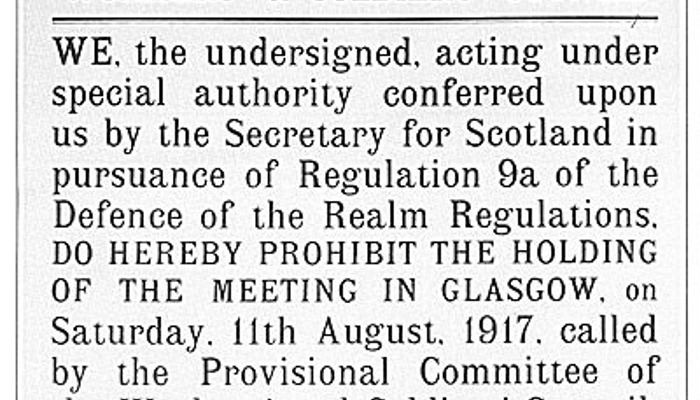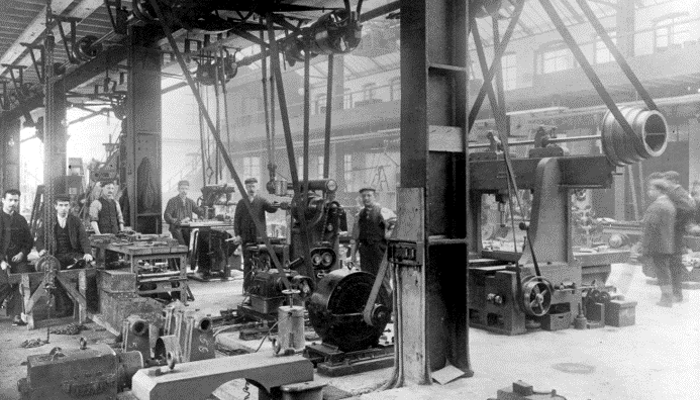
Ask the Archivist - Red Clydeside
Our next topic was a really interesting one: Red Clydeside and the First World War. The Q&A is below. You can also read a feature about these records in the Glasgow Times.
Q1: How did Red Clydesiders react to WW1?
While large numbers from Glasgow volunteered to fight in the war, there was also opposition led by the Independent Labour Party. Socialists like John Mclean and James Maxton opposed the war, while others like David Kirkwood did not. On 9 August 1914, five days after the start of the war, 5,000 attended an anti-war meeting at Glasgow Green. Such meetings were held regularly throughout the duration of the war.
Q2: What was the dilution dispute?
At the end of 1915 the government introduced a dilution policy to increase productivity in munitions production by bringing unskilled male and female workers into the munition works. Shop stewards feared that employers would substitute cheap labour for time-served skilled workers. Implementation of the government's dilution policy on Clydeside began in January 1916. Trouble escalated in Beardmore's in March 1916 leading to a strike by the three stewards, soon followed by 21 workers in three other munitions factories in the city.
Q3: Is there any evidence of ‘blacklisting’?
The government was certainly very nervous about events on the Clyde. In March 1916 it deported 7 shop stewards involved in the dilution strike under the Defence of the Realm Act. They were sent to Edinburgh where they had to report to the police three times daily. They returned to Glasgow In June 1917 when restrictions were lifted. We hold the records of the Clyde Shipbuilding Association and Scottish Engineering Employers Association which will show the measures employers put in place to combat ‘militancy’ in the workplace.
Q4: How did the Red Clydeside react to the Bolshevik Revolution?
The revolution was the theme of many of the traditional May Day demonstrations. 70,000 marched in Glasgow and 50,000 in London on such themes. In June 1917, workers in Britain tried to form Soviets. Glasgow Trade Council supported this movement and the Glasgow Corporation prohibited the holding of a meeting in Glasgow in August 1917 by the Provisional Committee of the Workers’ and Soldiers’ Council.
Q5: The Battle of George Sqaure - myths and reality
The battle of George Square, 31 Jan 1919, was a violent confrontation between Glasgow City Police and striking Glasgow workers, centred around George Square. It is a story which long defined how the city viewed itself but much of it is a myth. Churchill did not send troops to curb the strikers. The Sheriff of Glasgow called them in to maintain order and the economy. They did not arrive until hours or days later and and many of the troops were in fact Scots. The demonstrators did not face tanks, machine guns or troops.
Q6: What records do you hold relating to major Red Clydeside figures?
Many of the major characters, such as Mclean and Gallacher, feature across our collections. However in terms of substantial holdings our James Maxton archive is comprehensive, detailing his early life and career, his experiences during the war - including his imprisonment - and his political career. The personal and political letters tell the story of a man of not only of strong beliefs and principle, but also a much admired man for his warmth and engaging personality.
Red Clydeside and the First World War


